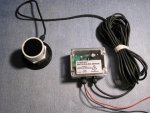FullCircle
Well-Known Member
Not true, decks are often foam sandwich or balsa cored, and many boats have foam sandwich above the waterline, but most AWBs by Beneteau, Jeanneau, Bavaria et al are plain and simple fibreglass layup below the waterline.
True, my 5 year old Jeanneau 35 is old fashioned plain layup. Also, my deck is a one piece low pressure grp injection moulding, very impressive.




